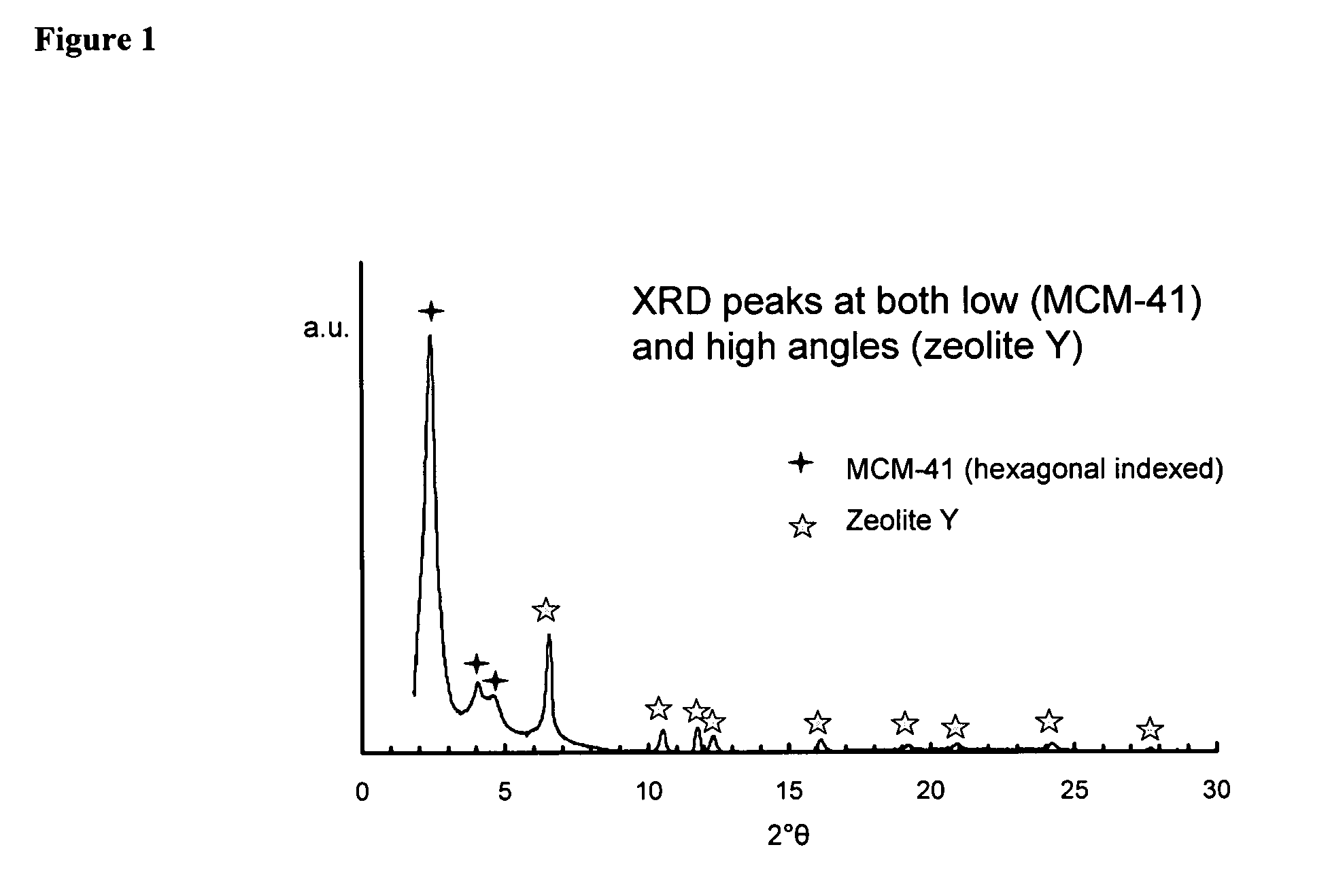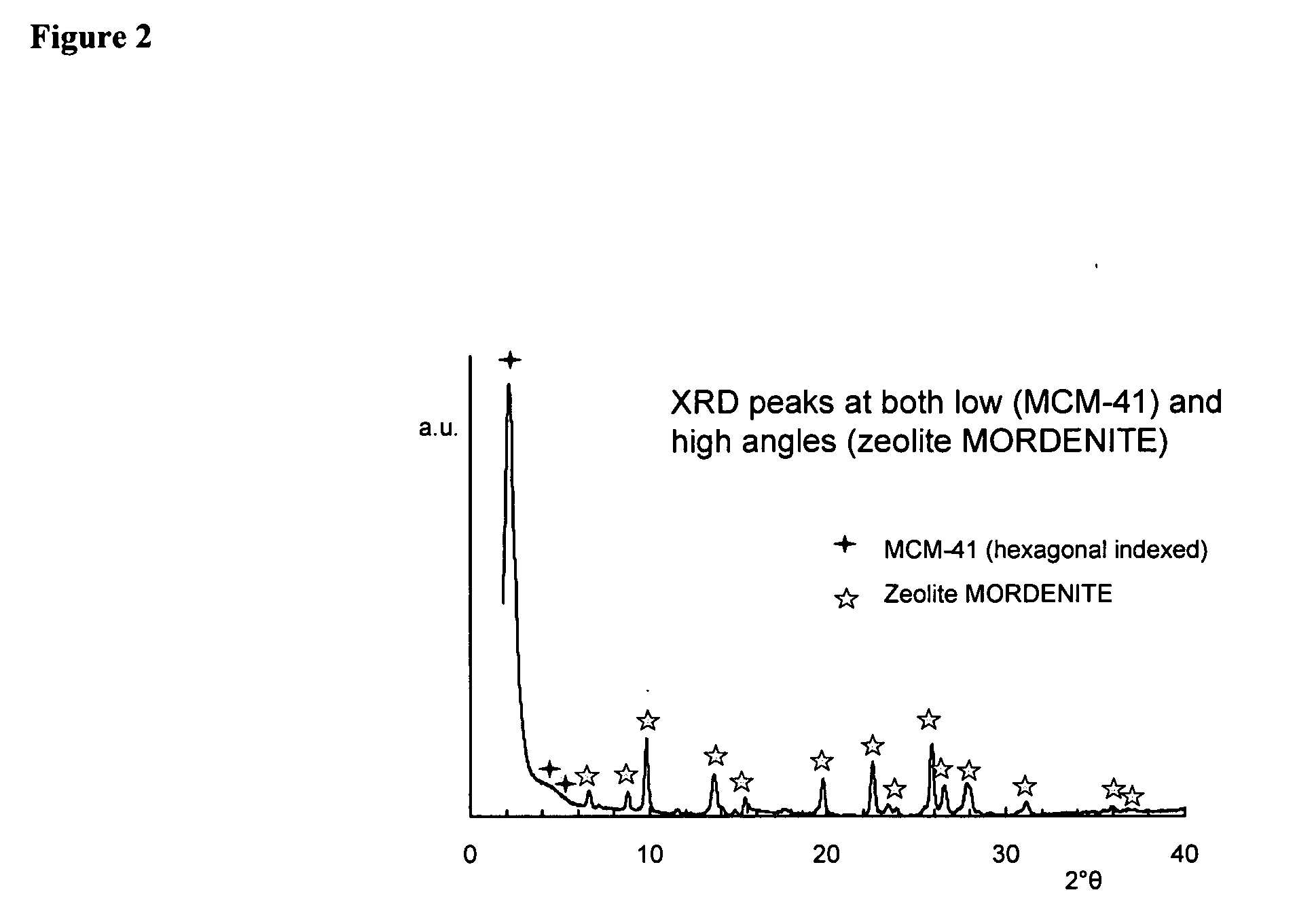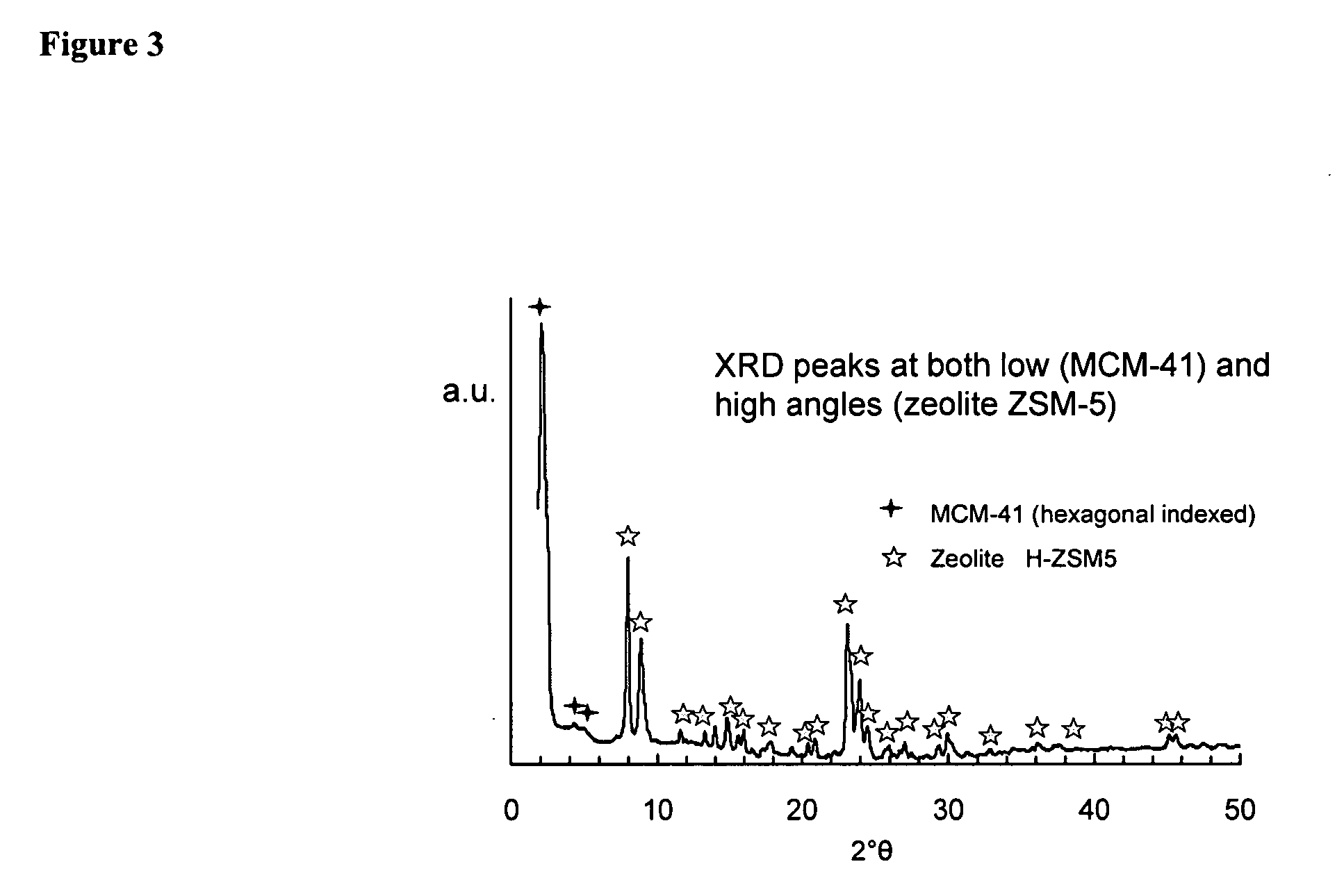Mesostructured zeolitic materials, and methods of making and using the same
a technology of zeolitic materials and zeolitic acid, which is applied in the field of zeolitic acid, and methods of making and using the same, can solve the problems of not possessing strong acidity, not having strong acidity, and not having strong acidity, and achieves the effect of increasing the production of gasoline and increasing the production of light olefins
- Summary
- Abstract
- Description
- Claims
- Application Information
AI Technical Summary
Benefits of technology
Problems solved by technology
Method used
Image
Examples
example 1
[0103] Synthesis of H-Y[MCM-41]—0.79 g of H-Y (Zeolyst CBV-720 Si / Al=15) were stirred in 50 mL of a 0.37 M NH4OH solution containing 0.55 g of CTAB, for 20 minutes, after which time the synthesis mixture was hydrothermally treated at 150° C. for 10 hours. The solid was filtered, washed, and finally ramped in nitrogen at 5° C. / min until 550° C., and then switched to air for 4 hours. Similar conditions were used to calcine all of the samples. Alternatively, 1 g of H-Y (Zeolyst CBV-720 Si / Al=15) was stirred for in 30 mL of a 0.09 M tetramethylammonium hydroxide (TMA-OH) solution. Then 0.5 g of cetyltrimethylammonium bromide (CTAB) was added. After 30 minutes of stirring the suspension was hydrothermally treated for 20 hours at 150° C. Structural parameters are presented in Table 1.
example 2
[0104] Synthesis of H-MOR[MCM-41]—2.0 g of H-MOR (calcined Zeolyst CBV21A Si / Al=10) was stirred in 50 mL of 0.27 M TMA-OH solution. Afterwards, 1.0 g of CTAB was added. After other 30 minutes of stirring the synthesis solution was hydrothermally treated at 150° C. for 20 hours. Structural parameters are presented in Table 1.
example 3
[0105] Synthesis of H-ZSM-5[MCM-41]—1.0 g of NH4-ZSM-5 (Zeolyst CBV3024E Si / Al=15) was stirred in 50 mL of 0.8 M HF solution for 4 hours. This suspension was added to a solution containing 0.69 g of CTAB, and stirred for 30 minutes. The resulting synthesis mixture was basified by slowly adding 2.5 g of a 30% NH4OH solution. Finally, it was hydrothermally treated at 150° C. for 20 hours. Structural parameters are presented in Table 1. The wall thickness was determined by the standard method within the art by substracting the distance between two pore centers (ao, obtained via X-ray diffraction) and the pore size (determined by N2 adsorption).
TABLE 1Structural parameters for the mesostructured zeolites.ao (nm)Pore diameter (nm)Wall thickness (nm)H-Y[MCM-41]4.22.61.6H-MOR[MCM-41]4.72.52.2H-ZSM-5[MCM-41]4.82.62.2
PUM
| Property | Measurement | Unit |
|---|---|---|
| Pore size | aaaaa | aaaaa |
| Pore size | aaaaa | aaaaa |
| Thickness | aaaaa | aaaaa |
Abstract
Description
Claims
Application Information
 Login to View More
Login to View More - R&D
- Intellectual Property
- Life Sciences
- Materials
- Tech Scout
- Unparalleled Data Quality
- Higher Quality Content
- 60% Fewer Hallucinations
Browse by: Latest US Patents, China's latest patents, Technical Efficacy Thesaurus, Application Domain, Technology Topic, Popular Technical Reports.
© 2025 PatSnap. All rights reserved.Legal|Privacy policy|Modern Slavery Act Transparency Statement|Sitemap|About US| Contact US: help@patsnap.com



